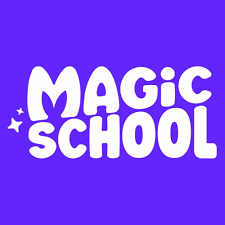The application of AI into education has certainly redefined the relationship between students, teachers, and the learning content. This is what Magic School AI exemplifies. The rise of AI in instructional settings mirrors the demand and the need for effective, personalized solutions in education technology. Today, Magic School AI is helping thousands of educators to relieve themselves from tedious administrative burdens, simplify lesson planning, as well as provide personalized assistance to pupils of varying abilities.
What Is Magic School AI?
Magic School AI is an educational technology platform that assists with meeting the needs of modern educators and learners by automating instructional and non-instructional tasks through the application of artificial intelligence. It was developed by Adeel Khan, an educator who started Denver’s Conservatory Green High School in 2016. The high workloads teacher drove him were experiencing during the post-pandemic period, where burnout levels soared to 52% in 2022. His goal has always been to aid educators by utilizing AI alongside Magic School so they can focus on developing meaningful connections with their students, instead of exhaustingly repetitive tasks.
Magic School AI comes with over 80 AI-based tools designed to assist teachers, students, and educational institutions from elementary school to college. It helps streamline classroom chores alongside skill-building, thereby promoting the practical understanding of artificial intelligence technology.

Most Important Features of Magic School AI
Magic School AI provides an impressive collection of tools designed to aid educators and learners. This focuses on the ‘A’ in ‘AI’ and represents an advantage in education. Some of these tools include:
Assistance with Lesson Plan Creation: Educators can create appropriate lesson plans in under ten minutes by inputting prompts like “Create a lesson on mitochondrial cell respiration for seventh graders”. Educators receive tailored plans for the Prompted objectives, thereby cutting down hours of preparatory work.
Automating Grading and Feedback: Educator workloads are notably lightened with the help of tools like essay feedback generators, which allow them to issue well-balanced feedback across all writing assignments without having to spend a lot of time.
Also Read: .NET Career Path: A Complete Roadmap for Beginners
Content Creation for Each Learner: These includes personalized instructional materials such as leveled readers and Individualized Education Programs (IEPs), which address the different capabilities within a class.
Question and Answer-Based Tutoring for Students: MagicStudent enables students to engage with chatbots like Raina for homework and concept-related questions, promoting self-directed learning while ensuring safety.
Custom Quiz Creation: Using the multiple choice quiz generator, teachers can formulate assessments that are tailored to individual topics and adjust the grade level difficulty to match the needs of their students.
With these features working together, educators can reduce the amount of time spent manually managing their classrooms and at the same time provide captivating tailored learning opportunities for each student.
Magic School AI Benefits for Teachers
Magic School AI has proved to be helpful with time management and educator burnout problems because of the new teaching AI tools. By automating monotonous work such as lesson planning, grading, and writing IEPs, the platform aids educators by 10 hours a week. A good example would be creating a lesson plan, which is a multi hour task, and through Magic School can be done in minutes, letting the teacher spend that time on student engagement activities instead. The designed user interfcae and the provided sample materials enable users to adjust succifiently even if they are unfamiliar with AI technology in classroom settings. Also, Magic School AI allows for self directed learning because of the unique IEPs that can be designed to fit the needs of special education students which makes it easier to provide differentiated instruction.
Magic School AI provides students with personalized adaptive learning resources that develop comprehension and engagement for each unique skill level. MagicSchool AI’s text leveler, for example, adapts readings for all levels of learners, facilitating accessibility. The MagicStudent platform offers Raina, an AI homework help bot that gives context-sensitive assistance and teaches students to arrive at their own answers instead of offering results, fostering positive reasoning. Even more, students can participate in innovative activities, such as AI tours of Rome as a part of their history or literature classes, turning lessons into games and enhancing motivation. Through this, the students are motivated to foster self-directed learning while gaining the necessary skills to work with AI technologies in the future.
How Magic School AI Works (in Simple Terms)
With the use of language models, Magic School AI is able to create appropriate school content for any subject. This educational content is accurate because it pulls information from an extensive knowledge base. A teacher could, for example, request, ” Create a quiz on the water cycle,” and the Magic School AI would produce outputs within seconds that could be further customized. Magic School seamlessly integrates with Learning Management Systems (LMS) such as Google Classroom, Canvas, and Schoology. With such integrations, teachers could export lesson plans, assignments, and assessments directly into their workflows. The design of Magic School AI is user friendly, requiring minimal training which translates to rapid adoption by educators. It’s compliance with laws such as FERPA and COPPA make Magic School AI a secure choice for schools because it does not require students’ personal information.
Comparison with other EdTech Tools.
Magic School AI has its own set of benefits while being compared with other platforms such as Google Classroom and Khan Academy. Google Classroom assists with managing the classroom and task distribution, but the AI content generation feature is non-existent. Teachers will still need to generate the materials themselves. We try to improve Google Classroom with Magic School AI by enabling teachers to create and export lesson plans straight into the LMS, thus reducing busywork. Khan Academy provides free tutoring with its AI tool, Khanmigo, and incorporates it into the content library. However, its ecosystem is closed off, and personalization is limited to within Khan Academy. Magic School AI, on the other hand, is not limited to its 80 stand alone tools, making it easier for educators to develop customized teaching materials tailored to various subjects and grade levels. While Khan Academy uses a Socratic approach that encourages independent student inquiry and problem-solving, the greater Magic School suite inclusive of classroom management and IEP creation gives educators a more comprehensive multi-functional solution.
Limitations or Risks
“Magic School AI”, just like any other educational tool powered by AI, has its benefits as well as disadvantages. Firstly, in regards to privacy issues, even though the platform is compliant with laws such as FERPA and COPPA, issues with data privacy in schools still persist. For example, educators must be cautious about revealing sensitive data, even for posting on the school wikis, because AI systems have the potential to gravely and unpredictably store data. Another challenge is the reduced AI dependency and the over-forreliance teachers might fall under when it comes to activities such as lesson planning or grading. This can eventually eliminate the human touch in education as more and more teachers default to these AI-assisted tasks. In regard to students, the Magic School platform has a way of preventing students from abusing the system where they can set and monitor how much of the learning process Magic School AI can facilitate for them. Referring to bypassing learning processes, students could literally use AI to cheat their way through education which is very concerning. This concern is also mitigated by a combination of monitored dashboards and responsible usage AI protocols. Finally, there are more than 80 tools available making it difficult for new users who require some time to learn how to properly navigate the tools which is an overly daunting estimate as compared to other AI-assisted tools which don’t even come close in quantity.
The Use of AI in Schools
The case Magic School AI illustrates how far-reaching the application of technology in education could be, hinting at a world where personalized education is possible at scale. The platform’s ability to adjust content for pupils at different levels in the same classroom syncs with the historical ideal of 1:1 tutoring afforded to Alexander the Great when he was being taught by Aristotle. In years to come, as technology develops, tools such as Magic School AI could provide every learner in a classroom with customized guidance which would greatly equalize the opportunity gap created by varying levels of socioeconomic affluence. This potential rests on overcoming the digital divide, equitable access to technologies, re-emphasizing the need for humans to think critically in a world dominated by AI, and most importantly, prioritizing human-centered skills taught and developed in conjunction with artificial intelligence. AI literacy and responsible adoption is what Magic School AI enables, leading towards sustaining equilibrium and educational advancement in a dynamically balanced way.
Conclusion
Magic School AI is transforming education by giving teachers powerful tools that save time, while providing students with personalized learning that is effortless and captivating. It’s ease of lesson plan creation, grading, and promoting AI fluency makes it invaluable in contemporary teaching environments. Magic School AI illustrates a future where education is effective and equitable for all as AI in the classroom continues to expand. As such, teachers are advised to engage with this platform within reason, recognizing the merits of unfettered access tempered with human discretion. Technology, when integrated responsibly, can refashion possibilities within schools. In this case, AI tools intended for instructing teachers can enhance workflow efficiency, but will need to be utilized strategically so that the role of technology is as an ally, not a substitute, in the educational process.
FAQ: Answering Important Queries Concerning Magic School AI
1Q. What is Magic School AI and how does it work?
Answer. Magic School AI is an AI-powered platform that offers aide to educators in lesson creation and grading through over 80 tools. It also has automarking and content tailoring capabilities. Magic School AI drafts materials based on teacher inputs with sophisticated language models and works smoothly with Google Classroom and other similar systems.
2Q. Are there fees required to use Magic School AI?
Answer. The Magic School AI gives users a “free forever” plan which allows usage of all 80+ tools. However, more advanced features such as unlimited AI generations and LMS integrations come with a paid subscription. This starts at $99.96/year for individuals or custom pricing for districts.
3Q. Can Magic School AI assist educators with lesson plans?
Answer. Indeed, Magic School AI creates tailored lesson plans within minutes. This helps educators save a lot of preparation time because the system has the ability to create content for any subject or grade level.
4Q. Is using AI safe in class?
Answer. Magic School AI abides by privacy legislation such as FERPA and COPPA which protects student data, but educators should keep an eye on using AV technology, search for bias skeletons in AI outputs, and staff rules to ensure responsible use.
5Q. In what ways can students be responsible with Magic School AI?
Answer. With Magic School AI, students can use instructional aids like the MagicStudent tools, specifically the AI Raina, for assistance in homework and explaining concepts. However, they should not forsake personal effort, check AI-generated content against reality, and respect teachers’ instructions to uphold ethical standards.
